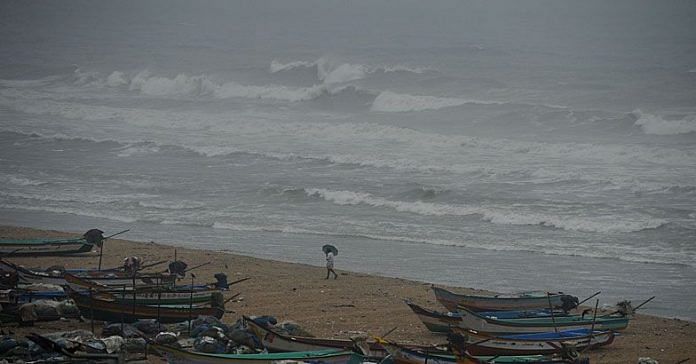Bengaluru: The eastern part of India has time and again borne the brunt of tropical storms. In 2018, three severe storms battered the east coast in just three months — cyclone Titli in October, cyclone Gaja in November and cyclone Phethai in December.
Between 1891 and 2000, 308 cyclones hit the east coast, of which 103 were severe. They affect every single state along the eastern coast each year — Odisha tops the list with 98 cyclones between 1891 and 2002.
Odisha is followed by Andhra Pradesh at 79, West Bengal at 69 and Tamil Nadu at 54.
Andhra Pradesh has been battered by 60 cyclones in the last 40 years. One major factor for this is that Andhra Pradesh’s geography and topography play a big role in acting as a magnet for tropical cyclones.
Tropical cyclones and storms in the Bay of Bengal region travel in the northwest direction, upward, owing to the shape of the Indian landmass and the storms’ anti-clockwise spin. States on the east coast have relatively flatter, plain land as compared to the country’s western coast, preventing any deflection of winds.
Because Andhra Pradesh lies right at the point where India’s coastline curves, its long shoreline makes for an easy target for most storms.
Also read: Cyclones Titli and Luban forming on either coast is a ‘rarest of rare’ occurrence
Bay of Bengal vs Arabian Sea
The Indian subcontinent is the most affected region in the world with regard to tropical cyclones — the country has a coastline of 7,516 km (5,400 km along the mainland, 132 km at Lakshadweep and 1,900 km at the Andaman and Nicobar Islands) and gets hit by over 10 per cent of all the world’s tropical cyclones.
This figure, however, is skewed in favour of the country’s eastern coast, which not only witnesses more cyclones but is also battered by the more intense ones.
Most cyclones formed along the western coast of the country veer towards Oman — 58 per cent of the storms that form in the Bay of Bengal (BOB) hit the coast while only 25 per cent of those in the Arabian Sea does. This is because of the way cyclones are formed.
As the ocean’s surface heats up due to the sun, warm air and moisture from the top layers rise up from the surface of warm oceanic waters. As air rises up, more air rushes to fill the space. This air, in turn, becomes warm due to the top layers of warm water.
As the previously risen air forms clouds, the new warm air, in turn, rises with humidity, creating a cycle of warm, moist air constantly rising up and forming giant humid clouds. This system eventually grows in height and size, spreading out, creating a spinning tropical cyclone.
The country’s western coast is helped by mountains in East Africa that tend to direct a lot of wind towards the Arabian Peninsula, dissipating heat much more efficiently throughout the Arabian Sea. As a result, this part of the ocean remains relatively cool and produces lesser cyclones.
On the eastern coast, the shape of the land around the Bay of Bengal ensures that the winds are slower and weaker over the ocean. This part of the Indian Ocean is also fed by a constant source of freshwater from giant rivers such as the Ganga and the Brahmaputra.
Also read: So, the superstorm warning was a dud. Here’s why the Met often gets it so wrong
This water that empties into the Bay of Bengal takes up the space of the evaporated top layers, warming up at the surface and rising up as moisture. This makes it difficult for the warm layers of water to mix properly with the cooler layers of water below, keeping the surface always warm and ready to feed any potential cyclone over it.
Furthermore, the Bay of Bengal also welcomes cyclones formed over the Pacific. As there is no landmass big enough to stop these Pacific cyclones, they pass through Malaysia and the Gulf of Thailand and enter the Bay of Bengal.
Once they get here, the Himalayas and the Western Ghats prevent the winds from crossing over, so they circulate within the bay. States such as Andhra and Odisha simply happen to be at the wrong place with the right orientation, increasing their probability of being hit by a storm.







Please write correct information on how cyclones form and move. Kindly before publishing get it checked with some scientist/researcher. This article is filled up with scientific mistakes.
So what is the real reason , please help